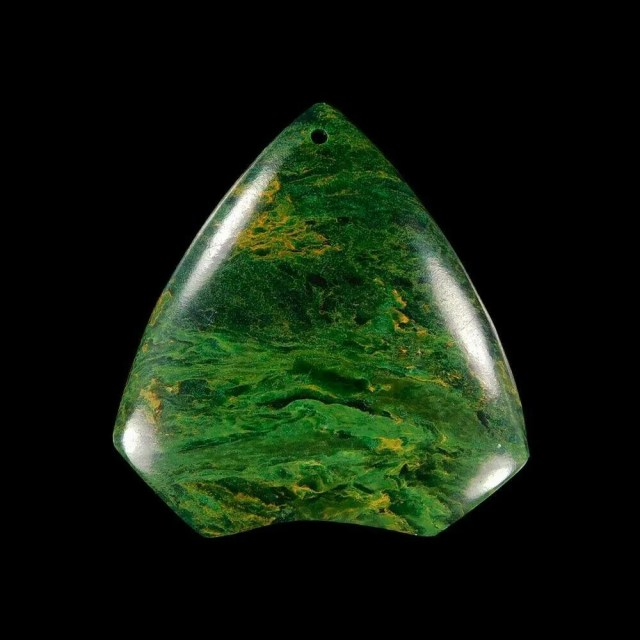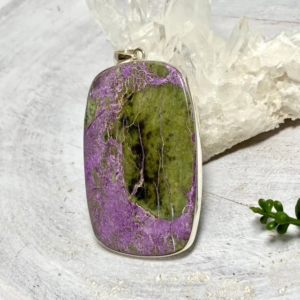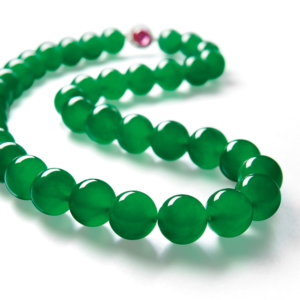jade in Jewelry and Ornamental Uses
Jade has long been valued for its beauty and symbolic significance, especially in jewelry and ornamental uses. It’s a versatile, elegant stone that holds deep cultural meaning in various civilizations, particularly in East Asia, Mesoamerica, and New Zealand.

Jade in Jewelry:
- Types of Jade:
- Nephrite Jade: Known for its creamy, smooth texture and more subdued green colors, it’s often carved into detailed shapes and used in both traditional and modern jewelry.
- Jadeite Jade: Considered rarer and more valuable, jadeite comes in a variety of colors, from vivid greens to lavender and white. It’s prized for its translucent, glassy appearance and its ability to take on a brilliant polish.
- Symbolism:
- Wealth and Status: In many cultures, jade has been associated with prosperity, status, and divine favor. It’s often used in rings, necklaces, and earrings as a symbol of high social rank or spiritual importance.
- Health and Longevity: Jade is believed to have healing properties, symbolizing vitality, longevity, and the restoration of balance in the body. Wearing jade jewelry is thought to protect the wearer and encourage physical and emotional well-being.
- Jewelry Types:
- Necklaces and Pendants: Often carved into intricate designs, jade pendants can take the form of symbols like dragons, lotus flowers, or deities in various cultures.
- Rings: Jade rings, particularly those made from jadeite, are worn for both ornamental purposes and as family heirlooms. They can be carved with auspicious symbols or left in their natural, polished form.
- Bracelets and Bangles: These pieces are often made from smooth, continuous jade bands or include jade beads strung together. They are not only stylish but also believed to promote inner peace and protection.
Jade in Ornamental Uses:
- Sculpture and Carvings:
- Artistic Masterpieces: Jade has been highly regarded for use in fine carvings, especially in ancient cultures. Chinese jade carvings of dragons, animals, and mythical creatures are among the most renowned works of jade craftsmanship. These pieces often serve as both art and symbols of good fortune.
- Cultural Artifacts: In Mesoamerican cultures, jade was often carved into ceremonial masks, figurines, and other ritual objects. These jade artifacts were believed to have spiritual significance and were used in important rituals.
- Decorative Objects:
- Vases, Boxes, and Decorative Items: Jade’s smooth texture and rich color make it an ideal material for ornamental objects like small boxes, vases, and figurines. These items are often highly detailed and are seen as status symbols or offerings to deities in some cultures.
- Cultural and Religious Art: In Chinese culture, jade is revered as a symbol of purity and moral integrity. Ornamental jade plaques, often inscribed with ancient Chinese characters or auspicious symbols, are given as gifts or kept as family treasures.
- Furniture and Home Decor:
- Jade-Inlaid Furniture: High-end furniture may feature jade inlays, especially in traditional Asian decor. Tables, cabinets, and chairs could have jade embedded into their designs, either as accent pieces or as part of intricate patterns.
- Wall Hangings: Large jade slabs, either polished or carved, may be displayed as part of decorative wall art. These could be embellished with auspicious symbols or simply appreciated for their natural beauty.
Cultural Significance of Jade:
- Chinese Culture:
- Jade is considered the “imperial” stone in China. It represents virtue, grace, and beauty. The imperial jade, a translucent emerald-green jadeite, is highly prized.
- Jade Burial Objects: In ancient China, jade was often placed in tombs as a means of ensuring the spirit’s protection in the afterlife, with jade burial suits being reserved for nobility.
- Mesoamerican Cultures:
- In ancient Mayan and Aztec cultures, jade was considered sacred. They carved it into masks, jewelry, and even used it in sacrificial ceremonies, as they believed jade had spiritual significance and could connect them with gods.
- Maori Culture:
- In New Zealand, jade (called pounamu) is highly valued by the Maori people, symbolizing strength, protection, and spiritual power. It is used to craft ceremonial tools, jewelry, and amulets passed down through generations.
Modern Uses of Jade Jewelry:
- Contemporary Design: Jade is often used in modern jewelry design, incorporated into sleek, minimalistic pieces such as bracelets, rings, and earrings. Designers may mix jade with other materials like gold, silver, and diamonds to create striking contrasts.
- Healing and Spiritual Jewelry: Jade continues to be popular in spiritual and wellness jewelry, believed to promote emotional balance, health, and harmony in modern holistic practices.
Jade is truly a multifaceted gemstone with both timeless elegance and deep cultural significance. Would you like to explore how it could be used within a specific world or setting, or is there a particular direction you’d like to take the concept of jade jewelry and ornamental uses?


Leave a Reply
Want to join the discussion?Feel free to contribute!